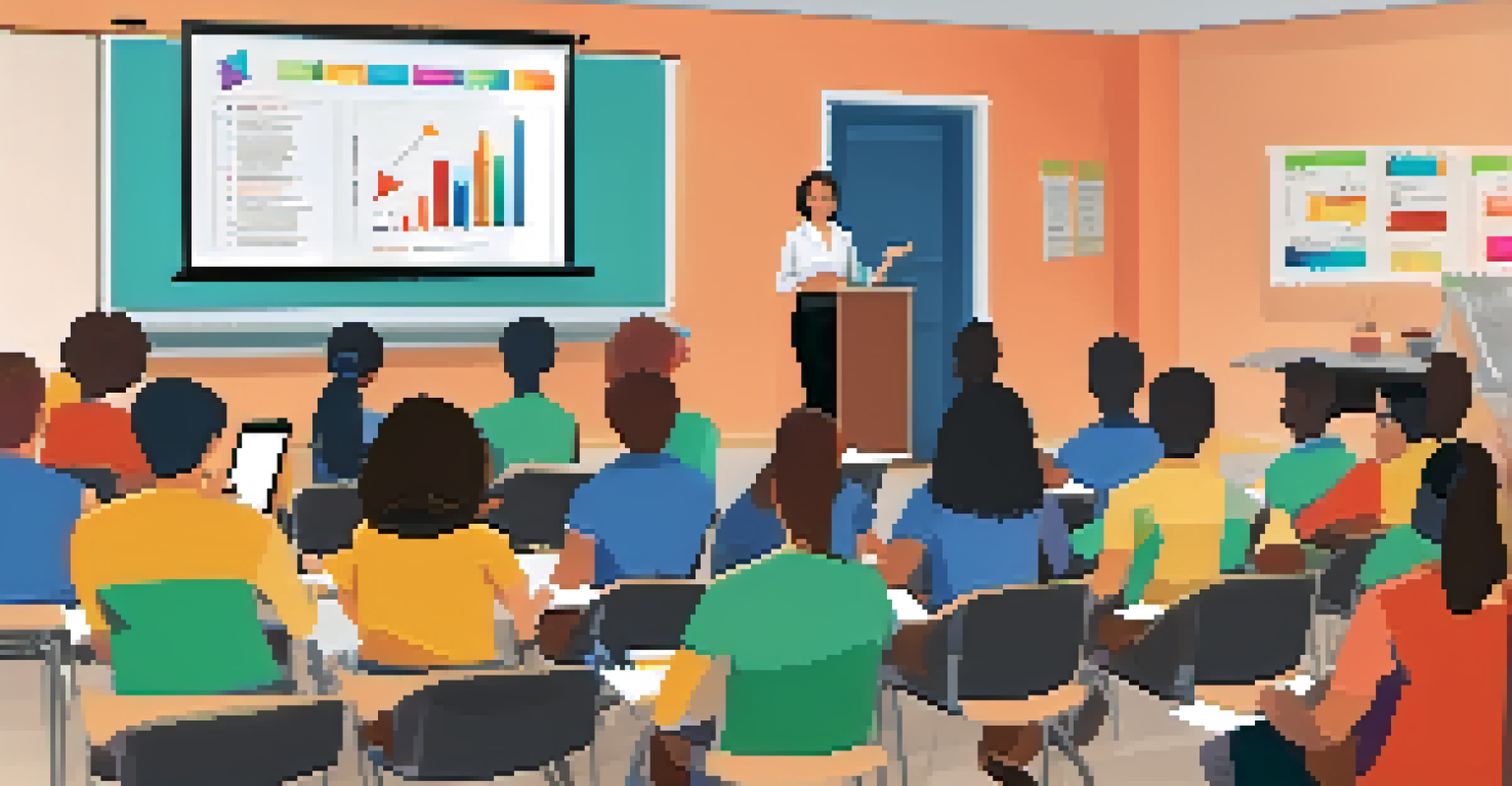Evaluating Professional Development Needs in Educator Groups

Understanding the Importance of Professional Development
Professional development is essential for educators to stay current and effective in their teaching methods. It not only enhances their skills but also ultimately benefits their students. In today's fast-paced educational landscape, continuous improvement is vital for fostering a positive learning environment.
Education is not the filling of a pail, but the lighting of a fire.
When educators engage in professional development, they cultivate a growth mindset, enabling them to adapt to new challenges. By seeking out learning opportunities, they can discover innovative strategies that address diverse student needs. This commitment to growth reflects a culture of excellence within educational institutions.
Furthermore, investing in professional development can lead to increased job satisfaction and retention among educators. When teachers feel supported in their professional journey, they are more likely to remain in their positions and contribute positively to their school community.
Identifying Specific Professional Development Needs
To effectively evaluate professional development needs, it's crucial to identify the specific areas where educators require support. This can be accomplished through surveys, interviews, and direct observations. Gathering feedback from teachers helps to uncover the skills and knowledge they feel are necessary for their growth.

Additionally, analyzing student performance data can provide insights into where educators may need to strengthen their skills. For example, if students struggle with math concepts, there may be a need for targeted training in effective math instruction. By aligning professional development with student outcomes, schools can ensure that educators receive relevant training.
Continuous Growth for Educators
Professional development enhances educators' skills and fosters a growth mindset to meet evolving teaching challenges.
Finally, educators themselves should be encouraged to reflect on their teaching practices and identify areas for improvement. This self-assessment fosters a sense of ownership over their professional growth, making them more invested in the development opportunities provided.
Creating a Collaborative Evaluation Process
Involving educators in the evaluation process is key to identifying their professional development needs. When teachers collaborate to assess their skills, they can share insights and experiences that may not be apparent in individual evaluations. This collective approach fosters a supportive environment where everyone feels heard and valued.
An investment in knowledge pays the best interest.
Establishing professional learning communities (PLCs) can facilitate ongoing discussions about development needs. These groups provide a platform for educators to discuss challenges, share successes, and brainstorm solutions together. As a result, they can identify common areas for growth and create targeted professional development plans.
Furthermore, incorporating feedback from school leadership and stakeholders can enrich the evaluation process. By considering multiple perspectives, schools can develop a comprehensive understanding of professional development needs and create a more tailored approach.
Utilizing Data to Inform Professional Development Decisions
Data-driven decision-making is essential when evaluating professional development needs. Schools can collect both qualitative and quantitative data to gain a holistic view of educators' competencies. This information can guide the selection of relevant training programs and resources.
For instance, pre- and post-training assessments can help measure the effectiveness of professional development initiatives. By analyzing this data, schools can adjust their programs to better meet the needs of their educators. This cycle of continuous improvement not only enhances training but also ensures that it remains relevant and impactful.
Data-Driven Development Decisions
Utilizing both qualitative and quantitative data helps schools tailor professional development programs to meet educators' specific needs.
Moreover, tracking participation and engagement in professional development activities can provide insights into the types of training that resonate with educators. This data can help schools tailor their offerings to better align with teachers' interests and preferences, ultimately leading to more successful professional development experiences.
Setting Clear Goals for Professional Development
Establishing clear goals is critical when evaluating professional development needs. Goals should be specific, measurable, achievable, relevant, and time-bound (SMART). By setting well-defined objectives, educators can better focus their efforts on areas that will promote their growth and enhance student learning.
In addition to individual goals, schools should also consider collective objectives for their educator groups. These shared goals can promote collaboration and foster a sense of community among educators. By working together towards common outcomes, teachers can motivate and support one another in their professional journeys.
Regularly revisiting and adjusting these goals is equally important. As educators grow and student needs change, professional development objectives should evolve accordingly. This adaptability ensures that educators remain engaged and aligned with the latest educational practices.
Implementing Professional Development Programs
Once needs have been identified and goals set, it's time to implement professional development programs. Schools should consider a variety of formats, such as workshops, online courses, and peer coaching, to accommodate different learning styles. Offering diverse opportunities enables educators to choose the methods that resonate most with them.
Additionally, providing ongoing support and resources can help reinforce the skills learned during professional development sessions. This might include access to instructional materials, mentorship, or collaborative planning time with peers. By fostering an environment of continued learning, schools can maximize the impact of their professional development initiatives.
Collaborative Evaluation Matters
Involving educators in the evaluation process creates a supportive environment that identifies collective professional development needs.
Finally, it's essential to promote a culture of continuous improvement where educators feel encouraged to seek out and engage in professional development. By recognizing and celebrating their efforts, schools can create a more positive atmosphere around professional growth.
Evaluating the Effectiveness of Professional Development
Evaluating the effectiveness of professional development programs is crucial for ensuring continuous improvement. Schools should gather feedback from participants to assess how well training met their needs and expectations. This feedback can provide valuable insights into what worked well and what may need adjustment.
In addition to participant feedback, measuring the impact of professional development on student outcomes is essential. Schools can analyze changes in student performance data to determine whether professional development has led to improved teaching practices. This connection between educator growth and student achievement reinforces the value of ongoing professional development.

Finally, schools should be open to making changes based on their evaluations. If certain programs are not yielding the desired results, it’s important to be flexible and willing to explore alternative options. This commitment to evaluation and adaptation demonstrates a dedication to the professional growth of educators and the success of their students.